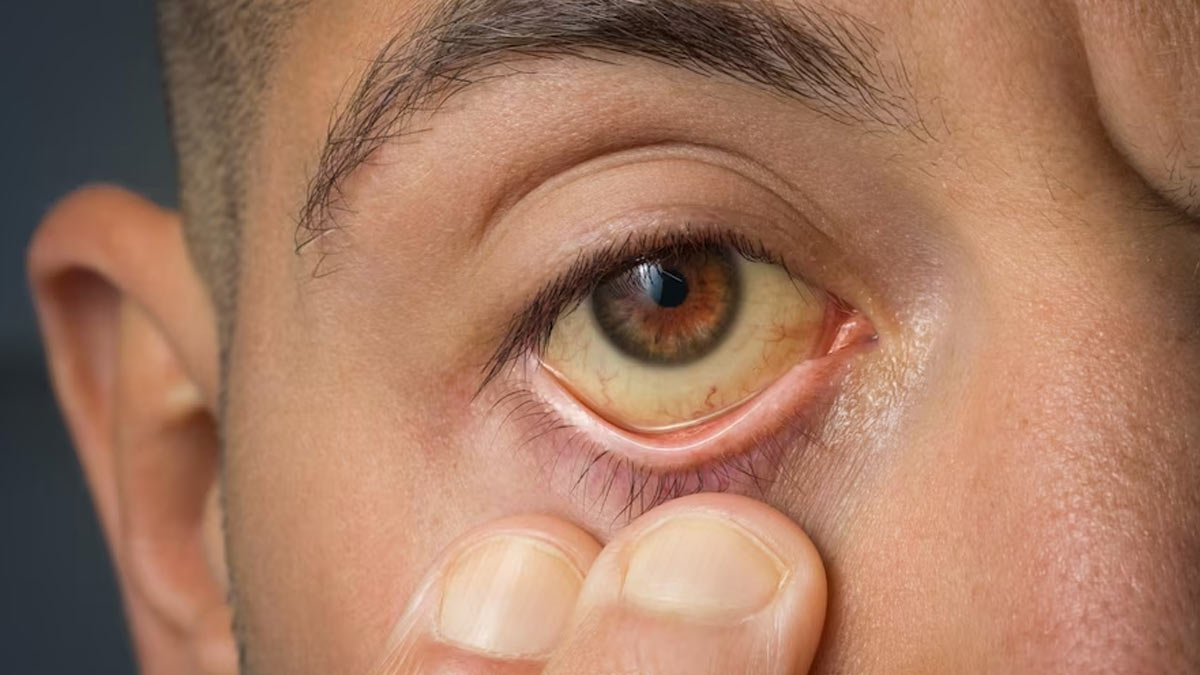
A very noticeable yellowish tinge on your skin and the whites of the eyes can mean jaundice, which usually indicates a problem with the liver or bile ducts. In an interaction with the OnlyMyHealth team, Dr Akash Shukla, Director and Consultant-Hepatology, Sir HN Reliance Foundation Hospital and Research Centre, Mumbai, explains how jaundice occurs and the many causes that lead to it.
Table of Content:-
Also Read: Excessive Daytime Drowsiness Can Be A Sign Of Fatty Liver Disease: Other Symptoms To Watch Out For
The Link Between Liver Problem And Jaundice

“Liver is one of the vital organs in the body, which helps in detoxification,” said Dr Shukla, adding, “Many harmful substances are removed from the body. When the liver fails to carry out this function, it leads to the build up of a waste material called bilirubin in the blood. Normally, bilirubin is excreted by the liver, through the bile ducts into the intestines and then the stool. But when things do not function properly and the liver can’t keep up, bilirubin levels rise and cause the skin to look yellow.”
The Prevalence Of Jaundice In Newborns
According to WebMD, jaundice is rare in adults. Research suggests jaundice is a common condition among newborns, with approximately 60% of term and 80% of preterm newborns developing clinical jaundice in the first week after birth. This is also called neonatal jaundice. Britain’s National Health Services (NHS) suggests that an estimated six out of every 10 babies develop jaundice, including 8 out of 10 babies born prematurely before the 37th week of pregnancy.
Common Causes Of Jaundice
According to Dr Shukla, jaundice is a condition characterised by the yellowing of the skin and eyes due to an increased level of bilirubin in the blood. There are several common causes of jaundice, including:
Hepatitis
Inflammation of the liver caused by viral infections (hepatitis A, B, C, D, or E) or other factors such as alcohol abuse, autoimmune disorders, or certain medications.
Alcoholic liver disease

Excessive and prolonged alcohol consumption can lead to liver damage, scarring (cirrhosis), and impaired liver function, resulting in jaundice.
Cirrhosis
Chronic liver disease characterised by the formation of scar tissue in the liver. It can be caused by hepatitis, alcohol abuse, non-alcoholic fatty liver disease (NAFLD), autoimmune disorders, or genetic conditions.
Also Read: Shaking Hands To Abnormal Gripping Of Pen While Writing Can Be Signs Of Writer's Cramp: What Is It Exactly?
Gallstones
When solid particles formed from bile (gallstones) block the bile ducts, it can lead to jaundice. The obstruction prevents the flow of bile from the liver to the intestines.
Hemolytic anaemia
A condition where red blood cells are destroyed more quickly than they are produced, leading to an increased production of bilirubin. This can be caused by various factors, including certain medications, autoimmune disorders, or inherited conditions.
Gilbert's syndrome
A relatively common inherited condition where the liver has difficulty processing bilirubin. This can result in mild jaundice, especially during times of stress, illness, or fasting.
Drug-induced liver injury

Certain medications, such as acetaminophen (paracetamol) in high doses, some antibiotics, and certain herbal supplements, can cause liver damage and result in jaundice.
Pancreatic cancer
Tumours in the pancreas can obstruct the bile duct, leading to jaundice.
Biliary tract disorders
Conditions that affect the bile ducts or gallbladder, such as cholangitis, cholecystitis, or primary biliary cholangitis, can cause jaundice.
Intrahepatic cholestasis of pregnancy
A condition that occurs during pregnancy, causing reduced bile flow and resulting in jaundice.
Conclusion
Jaundice serves as a visible indication to an underlying issue affecting the liver, bile ducts, or red blood cells. If you or someone you know experiences jaundice, it is essential to seek medical attention to determine the underlying cause. Prompt diagnosis and treatment can help alleviate symptoms, prevent complications, and improve overall health outcomes.
Also watch this video
How we keep this article up to date:
We work with experts and keep a close eye on the latest in health and wellness. Whenever there is a new research or helpful information, we update our articles with accurate and useful advice.
Current Version